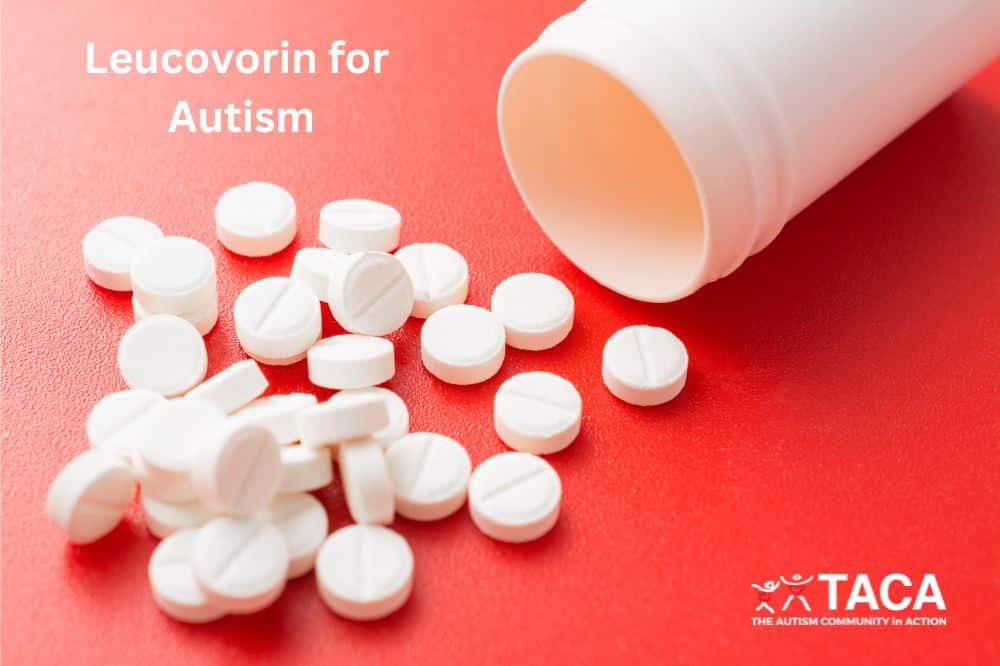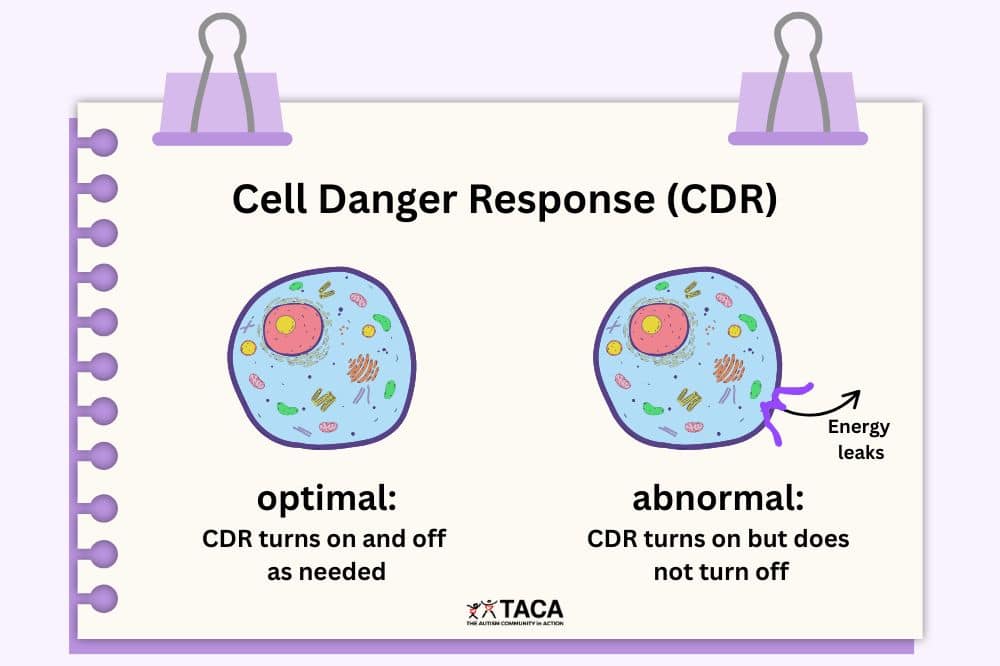Avoiding Processed Foods

All contents of this resource were created for informational purposes only and are not intended to be a substitute for professional advice, diagnosis, or treatment. Always seek the advice of your physician, therapist, or other qualified health providers with any questions or concerns you may have.
Diet change is an intervention many families with autism have found to yield profound improvements in the symptoms of autism. In addition, the individual biochemical needs of each person are different and may evolve over time. Specifically, reducing the consumption of processed foods is an important step that can improve outcomes for your child.
Many foods we consider healthy can still be highly processed, even if gluten-free, dairy-free, and soy-free. As such, they drive inflammation in the body. We must realize that the foods we choose to ingest can either help lower inflammation or increase it.
Research has shown that people with autism, OCD, PANS, and other neurological disorders have high levels of inflammation. Thus, reducing this inflammation is critical to healing processes. What we eat influences everything from mood and behavior, to focus and sleep.
This article will cover:
- Whole Foods verses processed foods
- Reasons for eating less processed foods
- Things to consider when shopping for less processed options
- Number of Ingredients
- Artificial Additives
- Preservatives
- Emulsifers
- Enriched / Fortified Foods
- Artifical food dyes and colors
- Artificial flavorings / Natural flavorings
- Sources of hidden MSG
- Natural or refined sugars
- Refined grains
- Refined oils
What is a whole food vs. a processed food?
The NOVA classification system identifies and categorizes the degree to which foods are processed.
The NOVA Categories:
- Unprocessed or minimally processed foods.
This is the edible parts of plants or animals that have been taken straight from nature or minimally modified/preserved. - Processed Culinary Ingredients.
These are basic pantry staples such as salt, oil, sugar, and starch that are produced from category 1 plants and animals. - Processed Foods.
Contains foods made from category 1 and 2 foods such as freshly baked bread, canned food, and cured meats. - Ultra-Processed Foods.
Ready-to-eat, industrially formulated products made mostly or entirely from substances derived from foods and additives. As a result, little if any intact Group 1 food remains. Examples include products such as Doritos, Goldfish snack crackers, soda, packaged cookies, flavored yogurt, or fast food.
Why less processing is best:
Increased food processing changes the nutrient profile and chemistry of the food…and not for the better! With each degree of processing, nutrients may be removed or compromised. In addition, enriched and fortified food with additives can have unwanted side effects or consequences.
The goal is to:
- Foods in their least processed form are most often higher in nutritional benefit.
- Processed foods tend to be higher in fat, salt and sugar; less nutrient dense; and more inflammatory.
Things to consider when shopping for less processed options:
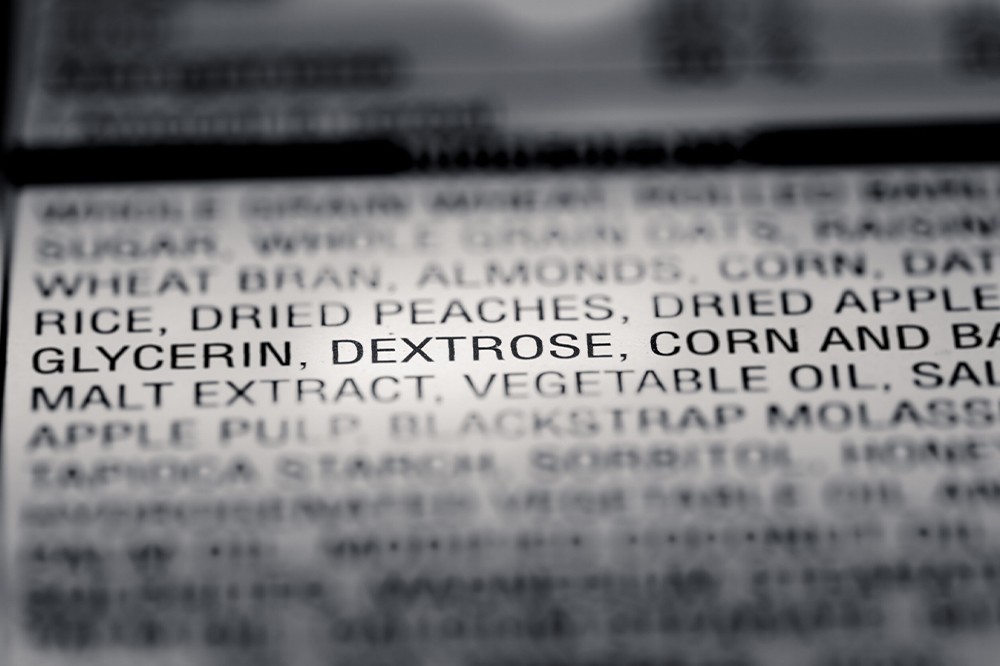
Look at the Number of Ingredients
If your food contains more chemicals than actual raw ingredients, be aware that the food is likely ultra-processed and inflammatory.
Avoid:
- Avoid products with more than 5 ingredients
- Avoid product ingredients with names that sound like something you’d find in a laboratory.
Instead:
- Look for fresh, ideally organic, whole food ingredients.
- Consider:
- Sourcing (where and how food was grown).
- Packaging (aluminum or plastic vs. no packaging).
- These can both contribute chemicals to the product that you won’t find on the label.
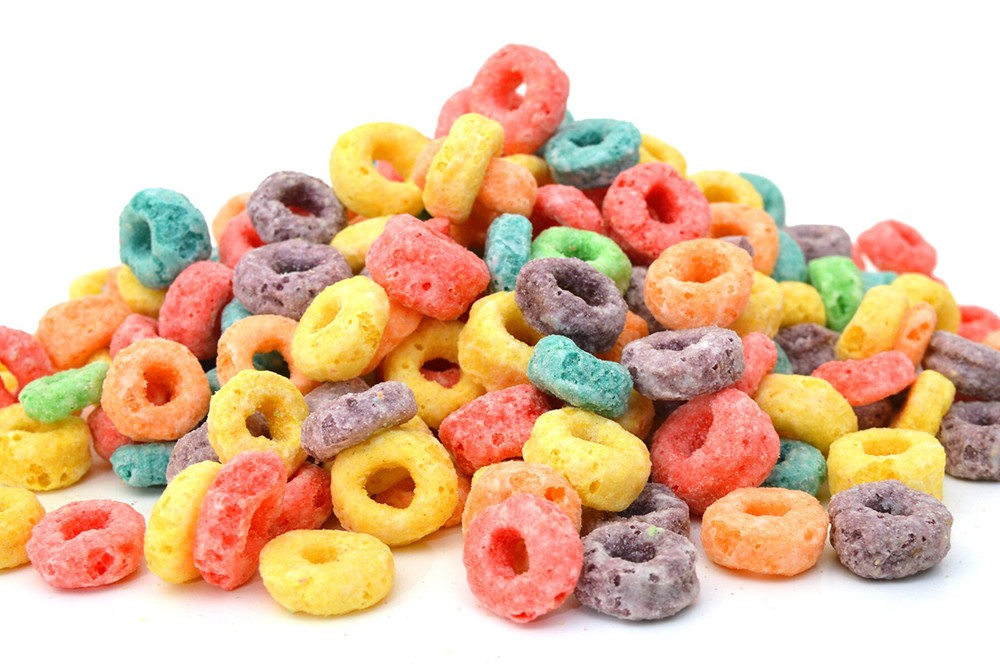
Are there artificial additives?
These include preservatives, emulsifiers, enriched/fortified nutrients, artificial dyes/colors, and artificial flavors.
- Read labels to identify additional ingredients included by manufacturers to improve taste, texture, color, shelf life, or the nutritional content.
- One or two, naturally derived, non-gmo additives may be fine for individuals in moderation. However, these choices can make things more difficult for those with sensitive digestive systems.
- Additives include preservatives, emulsifiers, enriched or fortified foods, natural flavors, and food dyes.
Preservatives:
- Preservatives are food additives that make foods last longer or taste better.
- You may see aspartame, ascorbic acid, sodium benzoate, potassium sorbate, or tocopherols as examples of preservatives on a label.
- Research says that sodium benzoate may increase hyperactivity, anxiety, allergic symptoms, DNA damage in vitro, and generates oxidative stress producing an adverse effect on the immune system, liver, kidneys, and fertility.
- When aspartame breaks down in the body, part of it results in methanol. That is problematic because methanol further breaks down into formaldehyde, which is a known carcinogen and neurotoxin.
- Sometimes the combination of preservatives is problematic. Benzoate can react with the ascorbic acid in drinks to produce the carcinogen benzene.
Emulsifiers:
- Emulsifiers bind solid and liquid ingredients together.
- Example: peanut butter so that it doesn’t separate.
- Some are derived from natural sources while others are synthetically made.
- They can be derived from highly allergenic or GMO sources.
- In these cases, extraction requires intense processing.
- They can be harder to digest or even impair gut health.
- Research shows that emulsifiers can cause intestinal inflammation.
- Mouse studies show that emulsifiers alter the gut microbiome, and cause anxiety and poor socialization.
- Specific emulsifier tolerance is very individual. Give consideration to consumption frequency and gut inflammation.
Emulsifiers to strictly avoid
Avoid PEG (Polyethylene Glycol), Polysorbate 80, (PPG) Polypropylene Glycol, carrageenan, methylcellulose.
Instead:
- Consume in moderation.
- Select safer options such as sunflower lecithin.
- Lecithin is a common emulsifier and can be soy, egg, or sunflower-derived.
- Sunflower lecithin would be the most preferred of those options as it has a gentle extraction process, is less allergenic and usually non-gmo.
Foods that often contain emulsifiers
Nut butter (emulsifiers keep it from separating), dairy free milk alternatives such as almond and coconut milk, ice cream, chewing gum, salad dressing, mayonnaise, frosting, processed meats, bread, chocolate and candy.
Enriched or Fortified:
Enriched means manufacturers have added back nutrients lost during processing.
Fortified means manufacturers have added additional “bonus” nutrients that otherwise would not be there.
In both scenarios, synthetic forms of nutrients are used such as folic acid instead of folate.
Foods often enriched or fortified:
Orange juice, milk, bread, flour, cereal.
What you may see on the label:
Examples include B vitamins (riboflavin, niacin, niacinamide, folate or folic acid), beta carotene, iron (ferrous sulfate), vitamin C (ascorbic acid), Vitamin D, or amino acids to boost protein content (L-tryptophan, L-lysine, L-leucine, L-methionine).
Food for Thought:
Artificial Food Dyes and Colors:
Processing foods causes color loss, and food dyes replace that color. Food dyes appeal to our visual senses and even help identify foods, supplements and medications. However, a number of studies have highlighted a host of challenges with artificial food dyes and colors including disruption of the balance of bacteria in the microbiome, intestinal inflammation, sleep disturbance, behavioral disturbances, and carcinogens associated with synthetic food dyes. Additionally, artificial food color usually contains petroleum and are manufactured in a chemical process including formaldehyde, aniline, hydroxides, and sulfuric acids. Finally, lead, arsenic and mercury may be present as impurities.
Avoid:
- Avoid products with artificial food dyes because these are ultra-processed foods.
Instead:
- Opt for fresh, whole foods or products that use whole fruits and vegetables for color.
- Look for dye free options for medications and supplements or request compounded versions.
Artificial and Natural Flavors:
Processed whole foods lose some of their natural flavors. Furthermore, longer shelf/freezer life breaks down natural flavors even more. As a result, food manufacturers use both artificial and natural flavor additives to mimic and enhance flavor. These additives also increase the addictive qualities of the product, telling your brain you want more!
Flavor additives are also cost effective. For example, you can make something taste like strawberry without using any strawberries. Finding a cost effective, addictive, and widely preferred flavor is a valuable recipe. Companies have a financial interest in keeping these recipes top secret. Subsequently, the FDA does not require flavor companies to disclose the ingredients provided all the ingredients have been deemed “generally recognized as safe” or GRAS.
Artificial flavors: These flavors fall into the “ultra-processed” category of foods. By FDA definition, they are chemicals that were not originally nature-sourced.
Natural flavors: These flavors are sourced from whole food ingredients, but may be significantly processed in order to extract and isolate the flavor into a usable form. In addition, they can be sources of MSG.
Avoid:
- Avoid foods with artificial flavors noted on the label.
- Be cautious with foods labeled with natural flavors, “spices,” or other vague flavor indications that don’t provide specific details on what the original sources of those natural flavors may be (i.e. corn, soy) or how they were processed.
Instead:
- Look for labels or stores that emphasize “no artificial ingredients.”
- When there are questions regarding the original source of a natural flavor/spice, call the manufacturer to confirm. Especially if you are avoiding sources like corn or soy in the diet.

Are there hidden sources of MSG or free glutamate?
Due to backlash in the 1980’s regarding the use of MSG in food, manufacturers discovered alternatives to including MSG in food. This included using an alternative name or enabling the release of MSG (free glutamate) into food as a natural byproduct of processing, and thereby avoiding having to put it on the label. The ingestion of free glutamate ingredients or foods that have been processed to release additional inflammatory free glutamate, can intensify symptoms for individuals who have underlying chronic inflammation. More on glutamate and autism here.
Avoid/Use Discretion With:
- Avoid processed or whole foods that have undergone grinding, long cook times, high heat, smoking, marinating, aging, fermentation (great for vegetables, not so great for proteins/fruits/starches) or hydrolysis. This level of processing could include things like protein powders, chicken nuggets, and nondairy milks.
- Avoid natural flavors extracted with heavy processing or from sources like soy, corn.
- This link provides a list of hidden names and sources of MSG/free glutamate in foods.
Instead:
Select food sources that have whole food ingredients in their natural state.

Are there natural or refined sugars?
Sugar is both inflammatory and addictive. It feeds yeast and bacteria in the gut, and spikes blood sugar levels upon consumption. Sugar may be naturally occurring in a food item or one of its ingredients such as the sugar in fruit, dairy, or carbohydrates such as rice. By contrast, refined sugars may come from a natural source such as sugar cane or corn, but then are processed to isolate the sugar. Sources of refined sugars are more inflammatory, however reducing both is important in lowering inflammation.
Foods that often contain hidden sugars:
Sports drinks, granola and cereals, nut butters, dried fruit, crackers, milk alternatives, and baked goods.
What you may see on the label:
Here is a listing of alternative names for refined sugars to avoid.
Instead:
- Look for products that use natural forms of sugar such as organic raw honey, organic maple syrup, and organic medjool dates. Then use in moderation.
- Select whole food ingredient products that are naturally lower in sugar and lower on the glycemic index.
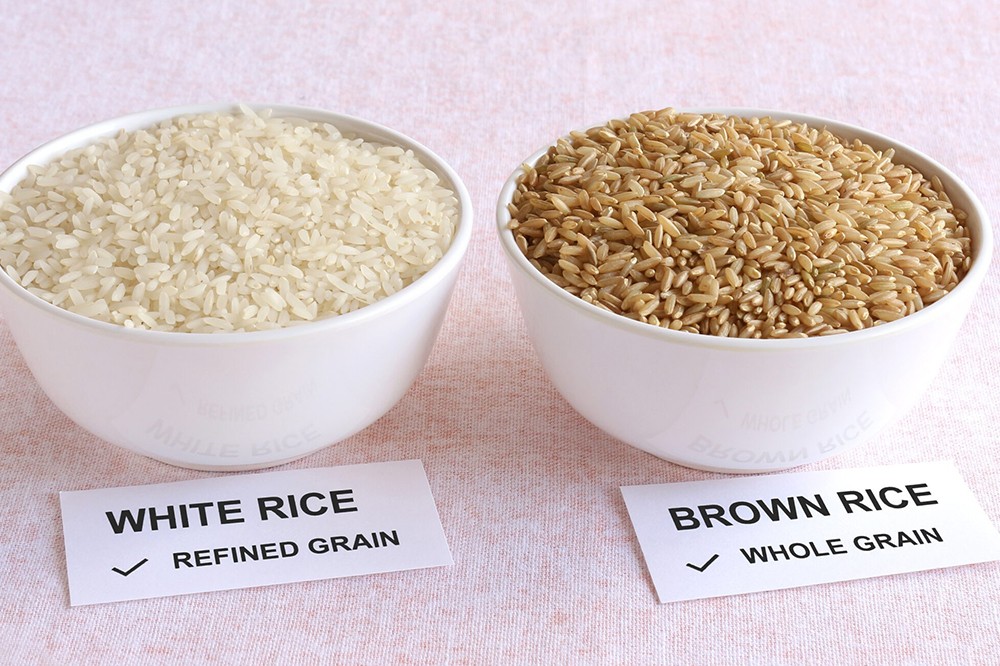
Are there whole grain or refined grain ingredients?
Whole grains have not been processed to remove the bran and germ. Therefore, they tend to be higher in fiber and minerals than refined or fortified grains. That makes them preferred. The processing to remove the bran and germ can also degrade the protein structures releasing inflammatory free glutamate.
Example: Brown rice vs. white rice. Brown rice contains all three parts of the grain intact: the bran, the germ and the endosperm (the center). Each layer provides different minerals and nutrients. White rice has the bran and the germ removed, leaving just the starchy endosperm which also has the least amount of nutrients. When white rice is digested, it quickly enters the blood stream and spikes blood sugar.
Avoid/Limit:
- Avoid/limit refined flours and grains found in crackers, cereals, white bread, and white rice.
Instead:
- Look for organic, whole grain and gluten free ingredients.
*Also be mindful of sourcing grain products as the potential for cross contamination and pesticide exposures can be problematic.

Is it made with refined oils?
Many seed-derived cooking oils are highly refined. They are made from genetically modified crops and go through extensive processing including dangerous hexane solvents, high temperatures, and bleaching resulting in even more toxic by-products. Additionally, refined oils are typically high in omega 6 fatty acids. Both omega 6 and omega 3 are fatty acids. Keeping a balanced ratio of these in the diet is important. When we have a higher ratio of omega 6, it can trigger the body to produce pro-inflammatory chemicals.
Avoid:
Avoid highly processed omega 6 fatty acid rich oils like soybean, canola, and cottonseed oils. Cookies, crackers, breads, chips, mayonnaise, and salad dressings can contain these oils.
Instead:
Look for products that use organic, cold pressed coconut oil, avocado oil, and olive oil.
Conclusion
Selected whole foods or those with limited processing and additives. Reading labels may help to reduce inflammation and challenging symptoms in individuals with autism when combined with a diet that accommodates their individual food sensitivities and nutritional needs.

